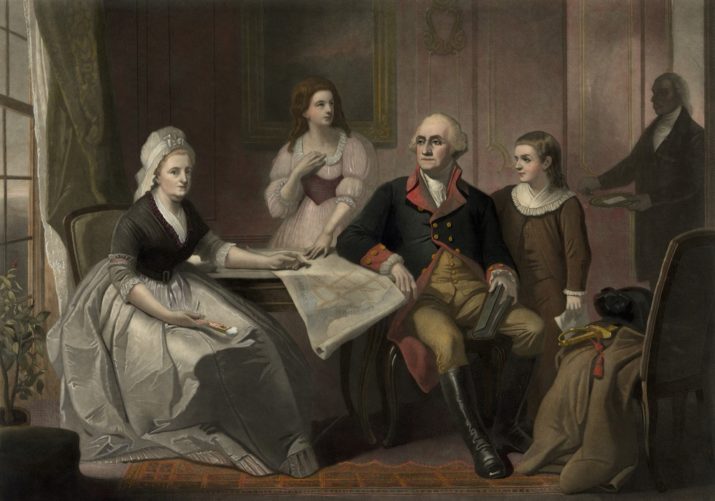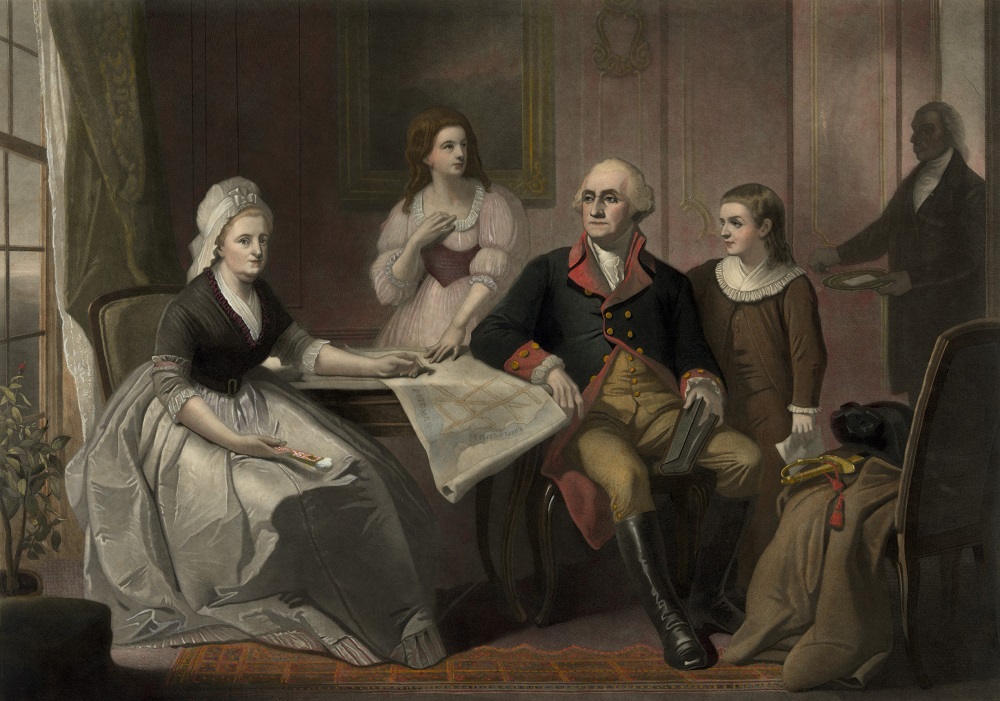

This is part of our special feature on Radicalism and Violence.
In the past few years, a number of far-right[1] groups, political parties, and movements have emerged and grown around the world: PEGIDA across Europe, the Rassemblement National (RN, better known under its former name, Front National) in France, the so-called “alt-right” in the US, the English Defence League (EDL) – the list goes on and on. Some of these groups live short, volatile lives, rapidly gaining prominence before collapsing – often due to interpersonal conflict (as in the case of the Traditional Workers Party in the US) or legal action taken against its members (as with Golden Dawn in Greece). Others, though, live less dramatic lives, following more traditional trajectories of social movements that struggle to gain attention and support while also struggling to achieve any of their goals.
Like any political actors, far-right groups that are not underground[2] want to gain support for their cause. Political parties (like RN) want to win the support of voters who can give them formal power in political institutions. Social movements (like the EDL) want changes in policy and culture. Individuals (like Anders Breivik) want to convince the public that their cause is righteous and their actions are justified.
One of the strategies (though by no means the only strategy) that far-right groups can use to gain support is talking about national history. Particularly for groups that see themselves as defenders of their nation (understood as a political community, be it a nation-state like Germany or a larger community like Europe, or even “the West”), this can be a natural way of talking. For example, those who understand themselves to be engaged in a (literal or metaphorical) battle for the future of their community often look to national myths for examples of others who engaged in similar conflicts in the past, and won.
Referring to national history can be an effective way for extremists to gain wider support despite the radical nature of their goals and behavior. Heroes from national myths often carry tacit – even unquestionable – political legitimacy and moral authority. Far-right extremists who identify with their nation may attempt to claim some of this legitimacy and authority for themselves by retelling the stories of conflict and crisis that feature these national heroes, depicting historical conflicts and crises as parallel to contemporary events, and themselves as the political descendants of the national heroes.
These stories can also help outside observers understand far-right actors. They reveal who extremists believe themselves to be, who they understand their enemies to be, and the kinds of behavior they believe are necessary and appropriate to defeat their enemies and achieve their goals. For this reason, researchers should look at how extremists talk about the past to help them develop richer understandings of these actors.
National History as a Strategic Frame
Scholars of social movements have long recognized that political activists use various communication strategies (often referred to as “strategic framing”) to help them achieve their goals. Strategic frames help these actors to articulate the problems they identify and the solutions to those problems; they also help these actors identify their allies and their enemies. Those in charge of communication for activist groups and movements intend for their messages to resonate widely with those whose support they want, mobilizing these supporters to take action on behalf of the groups.[3]
The use of national history can be an easy way for far-right actors to make their communication resonate with a large audience. National history is often familiar (at least in a thin way) to a broad segment of the nation’s public, providing a set of recognizable characters that extremists can attempt to connect to their cause. These characters carry legitimacy that extremists often lack. For example, Americans know how to feel about George Washington and Thomas Jefferson, but fewer know how to feel about the Oath Keepers (an extremist group that urges Americans to prepare for violent conflict with the federal government); if the Oath Keepers can make a compelling case connecting themselves to Washington and Jefferson, they benefit from the nearly universal tacit legitimacy that these individuals carry.
Pivotal moments of conflict and crisis from national history may be particularly useful for extremists in building the case that they are like national heroes. Right-wing extremists often understand themselves to be engaged in conflict to resolve a current crisis that threatens the very existence of the nation, and they often see this conflict as a contemporary iteration of a long-running battle. For example, the Oath Keepers refer to the leaders of America’s independence struggle not only to gain some of their legitimacy; these references also serve as a reminder of the stakes of political conflict and the types of action these conflicts require. Talking about General George Washington reminds the Oath Keepers and their audience that this conflict may necessitate war; it also shows that those who seem to be underdogs (whether the would-be Americans in the eighteenth century or Americans who resist the federal government today) can defeat an enemy who seems to be overwhelmingly powerful (whether the British Army in the eighteenth century or the federal government today).
If right-wing extremists like the Oath Keepers are able to retell the stories of moments of conflict and crisis from American history in ways that draw convincing parallels between those moments and the conflict that these extremists understand themselves to be locked into, they might gain support from the wider public that make up their political community. However, not all extremists can use national history in this way.
The Wrong Side of History
There are some far-right actors who clearly try to connect themselves to mainstream understandings of their political community, seeing themselves as patriots and valorizing the same historical events and characters that the rest of the nation valorizes. Some far-right actors, though, do not understand themselves as protectors of the nation, at least according to the dominant understanding of that nation.
A prominent example of this is the German far right. As many scholars have noted, expressions of patriotism in any form have been controversial since the end of World War II.[4] Though this is beginning to change as memory of Nazi Germany fades; it remains the case that the best-known historical figure from German national history (Adolf Hitler) is a villain, someone who carries no tacit political legitimacy or moral authority for the German public at large. Public spaces across Germany have banned references to Nazi and neo-Nazi symbols and ideas; but even without these bans, openly proclaiming that they are like those Germans who fought for the Third Reich would not be an effective rhetorical strategy for the German far right to gain wider public support.
As a result, much of the far right in Germany has adopted two types of historical references in their communication strategies: coded references to the Nazi party and open references to Nordic culture and history. As Cynthia Miller-Idriss demonstrates, Nordic culture allows the racist right to send a message about who belongs in Germany (that is, white people from the North who bear stereotypical Aryan characteristics) without using the banned and panned symbols of the Nazi past.[5]
Similarly, the so-called “alt-right” in America would have great difficulty in claiming the legacy of revered moments from America’s past. Though the United States is far from the “post-racial” nation that some hoped for when Barack Obama was elected to the presidency in 2008, the blatant white supremacy that the “alt-right’s” leaders advocate (even if they call it “white separatism” or “white nationalism” instead) is not considered a permissible set of political beliefs – even Donald Trump has felt it necessary to (eventually) disavow the support of outright white supremacists like David Duke.[6] The “alt-right” cannot easily claim the legacy of George Washington or Thomas Jefferson,[7] and the most morally-revered political actor from the American twentieth century – Martin Luther King Jr. – is understood to have been instrumental in the defeat of white supremacy.[8]
As these examples show, the ability of extremists to tap into their nation’s history depends, in large part, on how those who are part of that national community understand their history. If Americans largely believed Washington and Jefferson to be instrumental in the founding of a political community intended to benefit white people, the “alt-right” would be able to tap into national history more easily; if Germans today believed that the Nazi party was right in its arguments about racial purity, the German far right would be able to claim the history of the Third Reich openly.
The Consequences of National History as a Strategic Frame
When extremists use references to national history to talk about their political context, it can have three different consequences. First, it can guide their understanding of the present moment. Second, it can provide them with examples for how they ought to act, given that understanding of the present moment. Third, it can help them gain support from the wider public associated with that nation (though it does not always successfully do this).
The first consequence seems nearly tautological (extremists understand the present as repeating the past because they talk about the present as repeating the past). But it is more like a feedback loop than a tautology: the more extremists talk about the past, the more they see the present repeating the past. What may start out as abstract or vague references to those who fought the British in America’s War for Independence, for example, may lead the Oath Keepers to increasingly see themselves as pitted in the same sort of conflict today. Talking about themselves as fighting a new American revolution may encourage them to look for more specific parallels between current events and events during the original revolution.
Understanding the present through references to the past leads to the second consequence: using the past as a guide for behavior in the present. Since the Oath Keepers see themselves as fighting a second revolution, they look to the first revolution for lessons about how to win the conflict. They plan public events to follow the example of specific moments from history, and they criticize ongoing events from their allies when those events don’t follow the model of the successful movement for independence.[9]
These two consequences (which we might think of as internal consequences) occur alongside what might be the larger result of references to national history (which we might think of as an external consequence and has been my focus here): gaining support from the wider political community associated with the nation. Political extremists, in general, often find themselves lacking in public support; this is particularly true for those who see themselves as engaged in a pivotal conflict for the soul of a nation – a conflict which might require the use of violence and other forms of political behavior that are not widely considered legitimate in a particular political community.[10] If they can tie themselves to figures from national history – and especially if they can make a convincing case that their actions are like the actions of those national heroes – then their cause and their actions may gain wider public support (or at least may receive less condemnation).
Conclusion
National history can be a powerful way for political actors of all stripes to situate their cause and gain support, and this is certainly true for right-wing extremists who see themselves as defending their nation. Of course, it is not the only way for extremists to make sense of the present situation, guide their behavior, and gain support. They might reference other historical moments, or they might declare that a threat they perceive is unlike anything the nation has faced before. They might argue that the current moment demands novel forms of action to oppose their enemies and pursue their goals.
Some groups might understand themselves as part of a racial or religious community more than a political community. For these groups, the history they reference would likely focus on (imagined) racial or religious history instead of national history. Similarly, those whose support they want would be a smaller in-group, containing (potential) members of the racial or religious community. These groups would be less concerned with gaining the support of members of the nation in which they find themselves, but with which they may not identify.
Other right-wing extremists may almost exclusively focus on action, worrying little about principles that might shape their goals and behavior and lead to more support for their cause. For example, the neo-Nazi group described by Ingo Hasselbach seems to have been organized around engaging in violence rather than pursuing political goals (though some ideologues in the group likely cared deeply about their long-term goals).[11] Similarly, for the racist groups studied by Kathleen Blee, racial ideology was secondary to the sense of community that the groups provided for its members, especially for new members.[12] With these groups focused more on action or on community, recruitment tends to happen through interpersonal relationships, which means that the groups have less of a need to gain widespread support. Thus, these groups likely use national history as a strategic frame less than those groups whose identity and purpose are built around the defense of the nation.
For those groups that do rely on national history, though, understanding how they use this history reveals who they understand themselves to be and what kinds of behavior they might use to pursue their goals. For scholars, these stories can provide important insight into the groups. And for practitioners tasked with countering this type of extremism, paying attention to this use of history can provide insight into what kind of interventions might stymie recruitment efforts and – perhaps more importantly – can help practitioners avoid policies that reinforce the extremist worldview they are trying to counter.
Sam Jackson is an Assistant Professor in the College of Emergency Preparedness, Homeland Security, and Cybersecurity at the University at Albany. His research focuses on anti-government extremism in the U.S. and online extremism.
Photo: George and Martha Washington with their grandchildren, George Washington Parke Custis and Nelly Custis. An enslaved servant at right is probably William Lee or Christopher Sheels. Ca. 1790 | Shutterstock
References:
Blee, Kathleen M. Inside Organized Racism: Women in the Hate Movement. Berkeley: University of California Press, 2002.
Cobb, Charles E. This Nonviolent Stuff’ll Get You Killed: How Guns Made the Civil Rights Movement Possible. New York: Basic Books, 2014.
Gray, Rosie. “Trump Defends White-Nationalist Protesters: ‘Some Very Fine People on Both Sides.’” The Atlantic, August 15, 2017. https://www.theatlantic.com/politics/archive/2017/08/trump-defends-white-nationalist-protesters-some-very-fine-people-on-both-sides/537012/.
Hasselbach, Ingo, and Tom Reiss. Führer-Ex: Memoirs of a Former Neo-Nazi. New York: Random House, 1996.
Hill, Lance E. The Deacons for Defense: Armed Resistance and the Civil Rights Movement. Chapel Hill: University of North Carolina Press, 2004.
Jackson, Sam. “Non-Normative Political Extremism: Reclaiming a Concept’s Analytical Utility.” Terrorism and Political Violence, Forthcoming, 1–16. https://doi.org/10.1080/09546553.2016.1212599.
Miller-Idriss, Cynthia. Blood and Culture: Youth, Right-Wing Extremism, and National Belonging in Contemporary Germany. Durham: Duke University Press, 2009.
———. The Extreme Gone Mainstream: Commercialization and Far Right Youth Culture in Germany. Princeton University Press, 2017.
OathKeepers.org. “The Hammond Family Does NOT Want an Armed Stand Off, and Nobody Has a Right to Force One On Them.” Oath Keepers (blog), January 1, 2016. https://www.oathkeepers.org/the-hammond-family-does/.
Schock, Kurt. “Nonviolent Action and Its Misconceptions: Insights for Social Scientists.” PS: Political Science & Politics 36, no. 4 (2003): 705–12.
Snow, David A., and Robert D. Benford. “Ideology, Frame Resonance, and Participant Mobilization.” In From Structure to Action: Comparing Social Movement Research across Cultures, edited by Bert Klandermans, Hanspeter Kriesi, and Sidney G Tarrow, 197–217. Greenwich: JAI Press, 1988.
Snow, David A., E. Burke Rochford Jr., Steven K. Worden, and Robert D. Benford. “Frame Alignment Processes, Micromobilization, and Movement Participation.” American Sociological Review 51, no. 4 (August 1, 1986): 464–81.
Snow, David, Robert Benford, Holly McCammon, Lyndi Hewitt, and Scott Fitzgerald. “The Emergence, Development, and Future of the Framing Perspective: 25+ Years Since ‘Frame Alignment.’” Mobilization: An International Quarterly 19, no. 1 (February 1, 2014): 23–46. https://doi.org/10.17813/maiq.19.1.x74278226830m69l.
Stewart, Emily. “Trump Again Says He’s the ‘Least Racist’ Person There Is.” Vox, January 15, 2018. https://www.vox.com/policy-and-politics/2018/1/15/16891996/trump-least-racist.
Theoharis, Jeanne. A More Beautiful and Terrible History: The Uses and Misuses of Civil Rights History. Beacon Press, 2018.
Wendt, Simon. The Spirit and the Shotgun: Armed Resistance and the Struggle for Civil Rights. Gainesville: University Press of Florida, 2007.
[1] By “far right,” I mean actors who believe that the current political system is in crisis and that the solution is to preserve or restore some imagined ideal political system from the past (which may or may not have ever existed). Cynthia Miller-Idriss refers to this desire to preserve or restore an ideal nation as “aspirational nationhood.” Miller-Idriss, The Extreme Gone Mainstream, 105.
[2] An example of an underground group is the Nationalsozialistischer Untergrund (NSU) in Germany. This small group of neo-Nazis were active from 2000 to 2011, murdering at least nine “foreigners” and one police officer.
[3] On strategic framing, see, among others, Snow et al., “Frame Alignment Processes, Micromobilization, and Movement Participation”; Snow and Benford, “Ideology, Frame Resonance, and Participant Mobilization”; Snow et al., “The Emergence, Development, and Future of the Framing Perspective: 25+ Years Since ‘Frame Alignment.’”
[4] Miller-Idriss, Blood and Culture, chap. 2: Being and Becoming in Germany.
[5] Miller-Idriss, The Extreme Gone Mainstream, 96–99.
[6] As countless observers have noted, Donald Trump’s campaign seemed to embrace white supremacy while denying any attachment to white supremacy. Now, his administration has supported racist policies (most prominently with his push to “build the wall” on the U.S.-Mexico border), and Trump himself has flirted with white supremacy, for example declaring that there were good people on both sides of the “alt-right” rally in Charlottesville in 2017. It is worth noting, though, that Trump continues to argue that he is “the least racist person.” That is, even as he engages with the “alt-right,” he publicly denies any association with the movement. This shows that, regardless of the popularity of racist policies, a blatant racist identity is still taboo in the U.S. Gray, “Trump Defends White-Nationalist Protesters”; Stewart, “Trump Again Says He’s the ‘Least Racist’ Person There Is.”
[7] This inability to claim the legacy of the founding generation is ironic, given that many of the leading figures in that generation owned black men, women, and children as slaves.
[8] As many scholars have argued, contemporary American’s understanding of King has largely whitewashed him of his radicalism. For example, see Theoharis, A More Beautiful and Terrible History. Some scholars also argue that Americans overestimate King’s role in defeating Jim Crow, suggesting that those political changes would have been impossible without activists who were willing to use violence in defense of black political rights. On the role of violence, see Cobb, This Nonviolent Stuff’ll Get You Killed; Wendt, The Spirit and the Shotgun; Hill, The Deacons for Defense.
[9] For example, the group criticized the 2016 Malheur National Wildlife Refuge occupation, led by Ammon Bundy, as not following the example of the Battles of Lexington and Concord that began the War of Independence. See OathKeepers.org, “The Hammond Family Does NOT Want an Armed Stand Off, and Nobody Has a Right to Force One On Them.”
[10] Jackson, “Non-Normative Political Extremism”; Schock, “Nonviolent Action and Its Misconceptions.”
[11] Hasselbach and Reiss, Führer-Ex, chap. 22: Indoctrination.
[12] Blee, Inside Organized Racism, 25–53.
Published on October 2, 2018.




